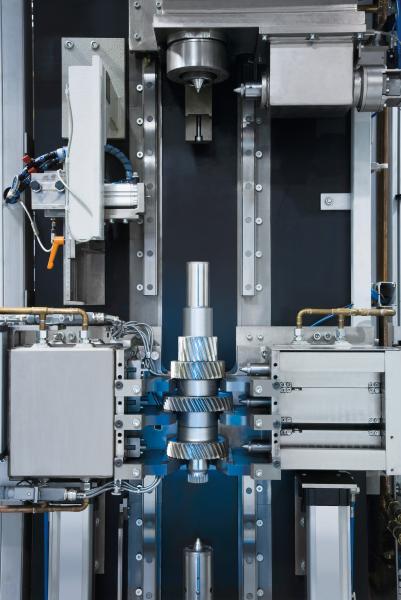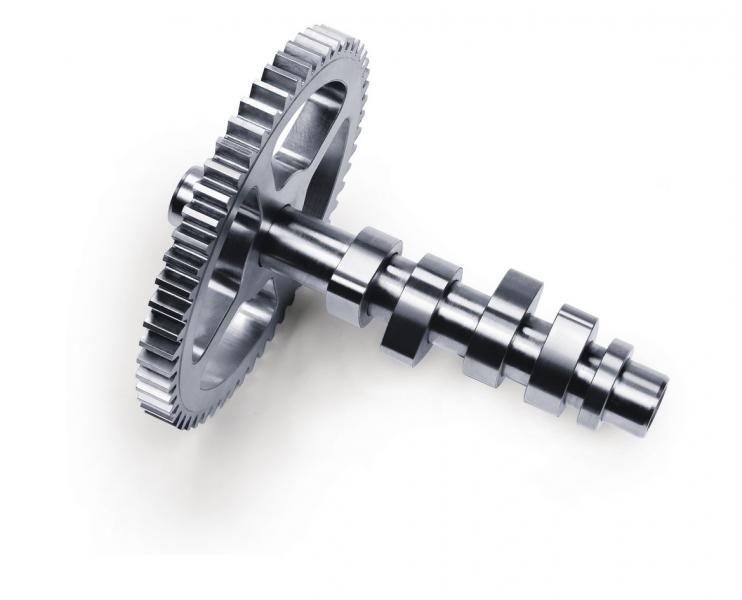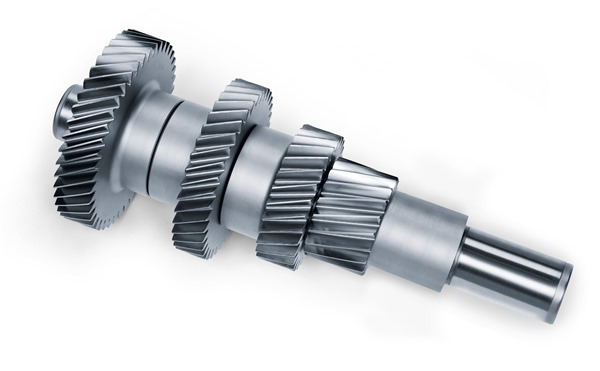With ever more complex constituent components and ever smaller batch sizes, powertrain production is facing many challenges. For a large number of applications in this sector the heat-shrink assembly process is almost predestined. Where control cams and/or gears have to be mounted on shafts, heat shrink assembly brings about a considerable reduction in component weight whilst guaranteeing a high degree of functional density of the shaft. The process is also suitable for workpieces that are subject to high torque rates and great dynamic loads. The heat-shrinking specialists from EMAG Automation develop individual, flexible manufacturing solutions.
Powertrain production calls for flexibility and effectiveness. Often a diversity of camshafts or gear shafts of complex geometry must be produced at the same location and in different batch sizes. On the other hand, demands on the actual component are also increasing. High-tensile materials are being used, geometries are getting more complex and components are expected to become smaller and weigh less. Against this background, composite camshafts are gaining in importance, for example in the automotive industry, where individual components are made in larger quantities and then joined according to engine type requirements. This leads to a noticeable reduction in production costs whilst maintaining the necessary high degree of precision.
Enormous economic potential
The heat-shrink technology needed to achieve it is developed by the machine builders at EMAG Automation, with headquarters at Heubach, near Aalen, Germany. The EMAG-patented heat-shrink assembly process is used to manufacture precision components – in particular composite camshafts – and is characterised by its reaction force-free processing sequence. In the centre of the EMAG system the component is brought up to the necessary temperature with great precision, using an inductive or contact heating process. The relevant preheating unit geometrically fits the workpiece and features an internal temperature control component.
After that, the warmed up workpiece is joined with the shaft without any application of force. As the workpiece cools, it clamps down firmly on the shaft. A combination of robots, NC axes and gripper technology guarantees a process with a joining clearance of less than 15 micron. For instance, the whole process for camshafts – from pick-up of the relevant components to completion of the force fit action – takes just about 7 seconds. A complete camshaft for a 4-cyinder engine is thus assembled in approximately 40 seconds. The processing speed is further increased by the fact that while one component is heat-shrunk, the next one is already being preheated – all inside the EMAG system.
It is not only the short cycle times from which the user benefits. The process also provides a large degree of freedom in the construction of the machine. For instance, the EMAG technology allows for a multitude of materials to be heat-shrunk, such as forged or sintered cams that don’t have to be ground anymore after having been shrunk onto the shaft. Ancillary components, such as bungs or end pieces, can be made from more cost-effective materials, giving access to a substantial savings potential. This approach also has a positive effect on development and functionality, as every component can be made to suit individual demands, whilst its functional density is increased. Where required, gears can, for instance, be fitted snuggly against shoulders, thus ensuring that many new design variants can be implemented on the smallest possible space.
Tailor-made system design
What kind of specific machine building know-how is required to design heat-shrinking machines? The crucial point in all of it must be the delicate production sequence of preheating, heat-shrinking and cooling. The EMAG specialists have the required practical knowledge to develop systems that offer total process integrity. In every case the system is tailored to suit the relevant production requirement.
Against this background, the machine manufacturers from Southern Germany rate the economic potential of their technology very highly and are doing so with great optimism. For instance, on the emerging Asian markets, which are flexing their muscles with a rapidly accelerating automobile production, many suppliers will have to increase their production capacity considerably over the next few years. And for this, EMAG Automation offers a solution that provides the answer also to future technological developments. How heat-shrinking technology suits these developments is shown by a concluding look at the construction of the modern engine for utility vehicles, which features camshafts with integrated bearing elements. As a consequence, no downstream grinding processes can be carried out on these shafts, as the chips produced would damage the bearings. It is why composite shafts are used exclusively – an approach that will only gain in importance when it comes to future utility vehicle designs.






 Germany
Germany